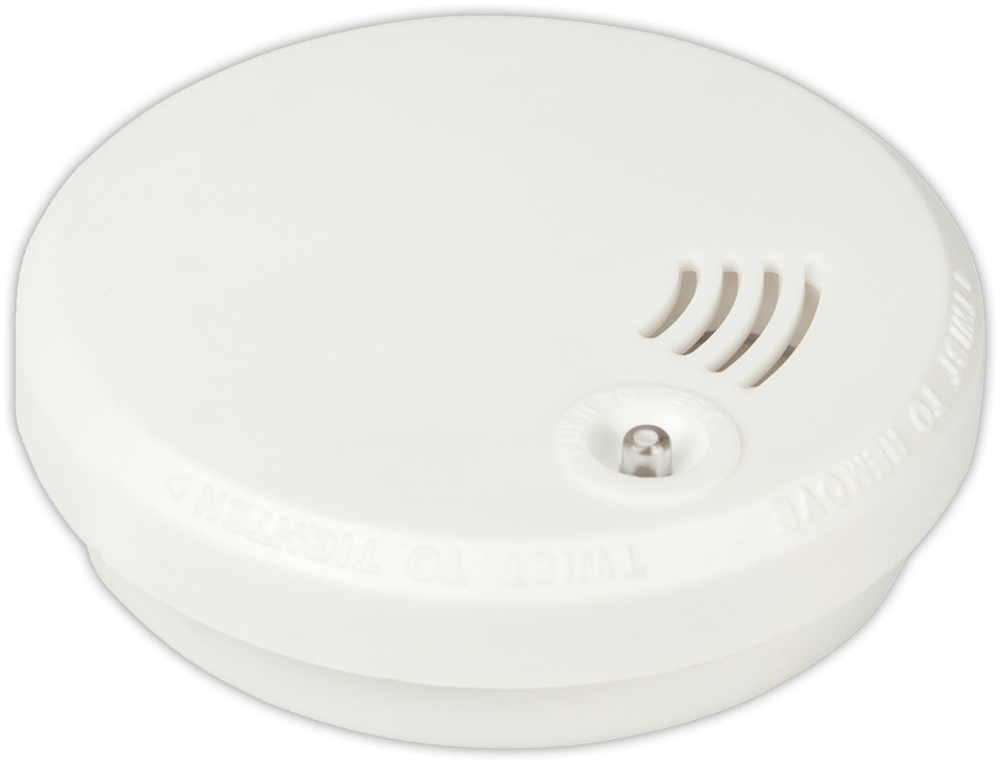For existing dwellings
From 1 January 2027
Smoke alarms in all dwellings must:
- be photoelectric (AS 3786-2014); and
- not also contain an ionisation sensor; and
- be less than 10 years old; and
- operate when tested; and
- be interconnected with every other smoke alarm in the dwelling so all activate together.
Smoke alarms must be installed on each storey:
- in each bedroom; and
- in hallways which connect bedrooms and the rest of the dwelling; or
- if there is no hallway, between the bedrooms and other parts of the storey; and
- if there are no bedrooms on a storey at least one smoke alarm must be installed in the most likely path of travel to exit the dwelling.
Smoke alarms must be hardwired or powered by a non-removable 10-year battery.
Dwellings being sold or leased
From 1 January 2022
Smoke alarms in the dwelling must:
- be photoelectric (AS 3786-2014); and
- not also contain an ionisation sensor; and
- be less than 10 years old; and
- operate when tested; and
- be interconnected with every other smoke alarm in the dwelling so all activate together.
Smoke alarms must be installed on each storey:
- in each bedroom; and
- in hallways which connect bedrooms and the rest of the dwelling; or
- if there is no hallway, between the bedrooms and other parts of the storey; and
- if there are no bedrooms on a storey at least one smoke alarm must be installed in the most likely path of travel to exit the dwelling.
Smoke alarms must be hardwired or powered by a non-removable 10-year battery.
New dwellings & renovations
From 1 January 2017
The development approval process for new dwellings and substantial renovations will ensure that building approvals received on or after this date will bring dwellings into compliance with the new laws.
Smoke alarms in the dwelling must:
- be photoelectric (AS 3786-2014); and
- not also contain an ionisation sensor; and
- be hardwired to the mains power supply with a secondary power source (i.e. battery); and
- be interconnected with every other smoke alarm in the dwelling so all activate together.
Smoke alarms must be installed on each storey:
- in each bedroom; and
- in hallways which connect bedrooms and the rest of the dwelling; or
- if there is no hallway, between the bedrooms and other parts of the storey; and
- if there are no bedrooms on a storey at least one smoke alarm must be installed in the most likely path of travel to exit the dwelling.
Installation locations
Where practicable smoke alarms must be placed on the ceiling. Smoke alarms must not be placed:
- within 300mm of a corner of a ceiling and a wall;
- within 300mm of a light fitting;
- within 400mm of an air-conditioning vent;
- within 400mm of the blades of a ceiling fan.
There are special requirements for stairways, sloping ceilings, and ceilings with exposed beams. Specific requirements will be explained in the Building Fire Safety Regulation 2008.
If impractical for the prescribed location requirements to be met (e.g. may be affected by steam from shower or fumes from cooking), the owner may put the alarm at another location that will provide a warning to occupants of the dwelling.



